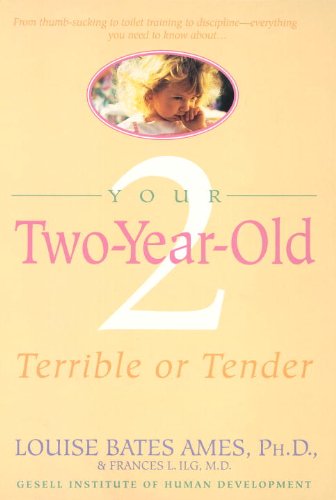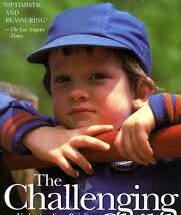
Your Two-Year-Old by Louise Bates Ames and Frances L. Ilg: A Comprehensive Guide
Introduction
Raising a two-year-old can be both challenging and rewarding. In their book Your Two-Year-Old: Terrible or Tender, Louise Bates Ames and Frances L. Ilg provide valuable insights into the developmental stages of this age group. This article delves into the key points of the book, offering parents a comprehensive guide to understanding and nurturing their two-year-old.
Key Developmental Milestones
The book highlights several milestones that are typical for two-year-olds:
| Milestone | Description |
|---|---|
| Physical Development | Improved coordination and motor skills, ability to walk, run, and climb. |
| Cognitive Development | Increased curiosity, learning through exploration, and beginning of pretend play. |
| Language Development | Rapid vocabulary expansion, forming simple sentences, and understanding basic instructions. |
| Emotional Development | Displaying a wide range of emotions, beginning of empathy, and asserting independence. |
Physical Development
Two-year-olds are highly active and constantly on the move. They exhibit improved coordination and motor skills, allowing them to walk, run, and climb with confidence. Parents may notice their child's growing ability to manipulate objects, such as building blocks or simple puzzles.
Cognitive Development
At this age, children are naturally curious and learn primarily through exploration. They engage in pretend play and start to understand basic concepts like colors and shapes. Their attention span is still short, but they can focus on activities that interest them.
Language Development
Language development accelerates during the second year of life. Two-year-olds rapidly expand their vocabulary, often surprising parents with new words. They begin to form simple sentences and can understand basic instructions. It is essential for parents to engage in frequent conversations and read to their children to support language growth.
Emotional Development
Two-year-olds experience a wide range of emotions, from joy to frustration. They begin to show signs of empathy and can understand others' feelings. However, they also assert their independence, leading to frequent power struggles with parents. Consistent routines and gentle guidance are crucial during this stage.
Challenges and Solutions
Parenting a two-year-old comes with its share of challenges. The book provides practical advice for addressing common issues:
- Tantrums: Remain calm, acknowledge the child's feelings, and redirect their attention.
- Sleep Issues: Establish a consistent bedtime routine and create a soothing sleep environment.
- Picky Eating: Offer a variety of healthy foods and avoid pressuring the child to eat.
Building Positive Relationships
The foundation of a positive parent-child relationship lies in consistent and loving interactions. The book emphasizes the importance of spending quality time together, offering praise and encouragement, and setting clear boundaries.
Conclusion
Understanding the unique needs and characteristics of a two-year-old can help parents navigate this stage with confidence. Your Two-Year-Old: Terrible or Tender by Louise Bates Ames and Frances L. Ilg is an invaluable resource for parents seeking to nurture their child's development. By focusing on key milestones, addressing challenges, and building positive relationships, parents can create a supportive environment for their two-year-old's growth.
For more insights and resources, visit our website at Read Review Talk and check out our blog.



